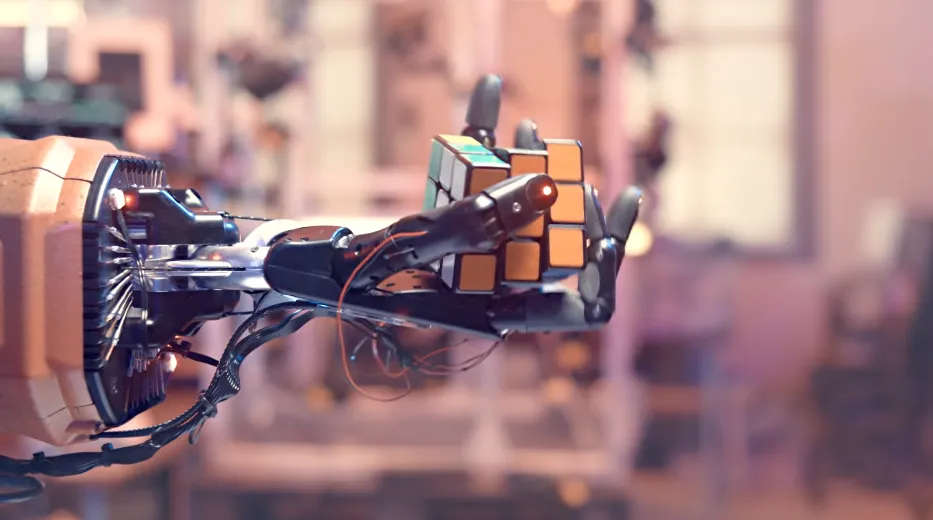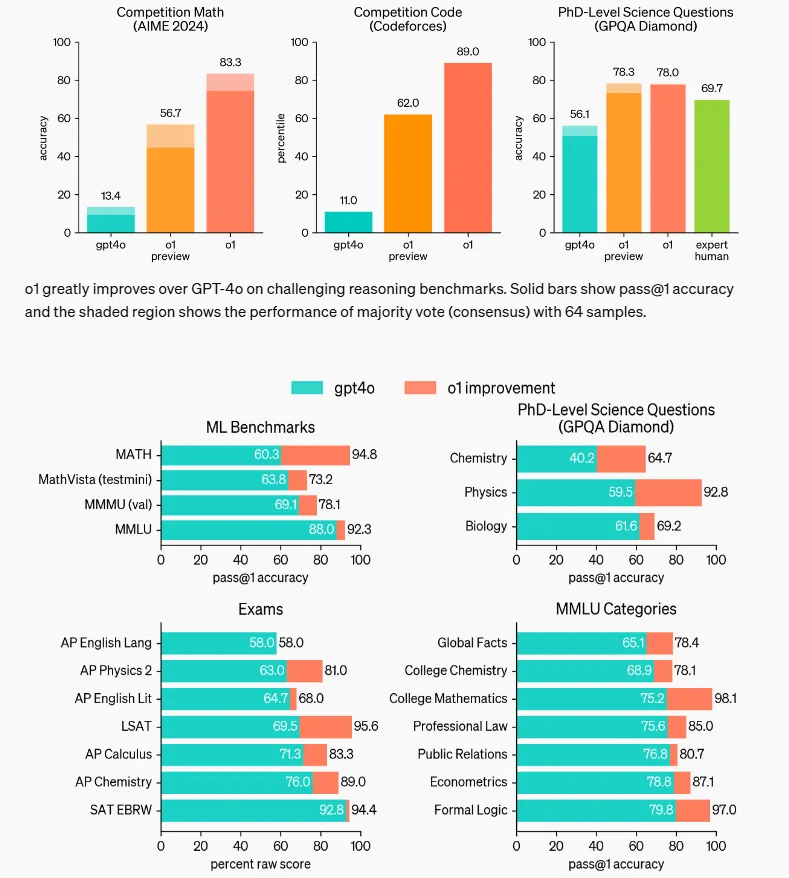Exploring o1-preview and o1-mini
Exploring OpenAI’s Latest Innovations: o1-preview and o1-mini
Created Sep 12, 2024 - Last updated: Sep 12, 2024
Exploring OpenAI’s Latest Innovations: o1-preview and o1-mini

OpenAI has recently introduced two groundbreaking models, o1-preview and o1-mini, designed to push the boundaries of artificial intelligence reasoning capabilities. These models represent a significant leap forward in the field of AI, particularly in their ability to handle complex reasoning tasks. This blog will delve into the details of these models, making it accessible for beginners.
OpenAI o1-preview: A New Era of Reasoning
The o1-preview model is part of OpenAI’s new series of reasoning models, specifically trained to tackle complex problems in science, coding, and mathematics. Unlike previous models, o1-preview is designed to spend more time thinking before responding, much like a human would. This approach allows the model to refine its thought process, try different strategies, and recognize mistakes, leading to more accurate and reliable outputs.
[other]Source: OpenAI[/other]
One of the standout features of o1-preview is its performance on challenging benchmarks. For instance, in a qualifying exam for the International Mathematics Olympiad (IMO), the model correctly solved 83% of the problems, a significant improvement over previous models. Additionally, it has shown remarkable capabilities in coding, reaching the 89th percentile in Codeforces competitions.
[other]Source: OpenAI[/other]
The model’s ability to reason through problems also enhances its safety and alignment. By understanding and applying safety rules more effectively, o1-preview can better adhere to guidelines, making it a safer option for various applications. This is particularly important as AI continues to integrate into more aspects of our daily lives.
OpenAI o1-mini: Efficiency Meets Performance
To complement the o1-preview, OpenAI has also released o1-mini, a smaller, faster, and more cost-effective model. While it may not have the broad world knowledge of its larger counterpart, o1-mini excels in specific areas, particularly coding. It is designed to be 80% cheaper than o1-preview, making it an attractive option for developers who need powerful reasoning capabilities without the high costs.
[other]Source: OpenAI[/other]
Despite its smaller size, o1-mini retains the core strengths of the o1 series. It can generate and debug complex code efficiently, making it a valuable tool for developers. Its cost-effectiveness and speed do not come at the expense of performance, as it still delivers impressive results in reasoning tasks.
[other]Source: OpenAI[/other]
How to use OpenAI o1
ChatGPT Plus and Team users will be able to access o1 models in ChatGPT starting today. Both o1-preview and o1-mini can be selected manually in the model picker, and at launch, weekly rate limits will be 30 messages for o1-preview and 50 for o1-mini. OpenAI is working to increase those rates and enable ChatGPT to automatically choose the right model for a given prompt.
ChatGPT Enterprise and Edu users will get access to both models beginning next week.
Developers who qualify for API usage tier 5(opens in a new window) can start prototyping with both models in the API today with a rate limit of 20 RPM. OpenAI is working to increase these limits after additional testing. The API for these models currently doesn’t include function calling, streaming, support for system messages, and other features. To get started, check out the API documentation(opens in a new window).
Use Cases:
OpenAI’s new models, o1-preview and o1-mini, are designed to excel in complex reasoning tasks. Here are some key use cases for each:
o1-preview
- Scientific Research: Ideal for solving complex problems in physics, chemistry, and biology. It performs at a level comparable to PhD students in these fields.
- Mathematics: Excels in solving advanced mathematical problems, scoring 83% on a qualifying exam for the International Mathematics Olympiad.
- Coding: Highly effective in competitive programming, ranking in the 89th percentile on Codeforces.
- Safety and Compliance: Enhanced safety features make it better at adhering to safety guidelines and preventing misuse.
o1-mini
- Cost-Effective Coding: Designed for coding tasks, it is 80% cheaper than o1-preview, making it a budget-friendly option for developers.
- Workflow Automation: Useful for building and executing multi-step workflows, especially in software development.
- Debugging and Optimization: Effective in debugging large-scale systems and optimizing code.
These models represent a significant advancement in AI capabilities, particularly for tasks that require deep reasoning and problem-solving skills.
Evalution:

Human preference evaluation
In addition to exams and academic benchmarks, they also evaluated human preference of o1-preview vs GPT-4o on challenging, open-ended prompts in a broad spectrum of domains. In this evaluation, human trainers were shown anonymized responses to a prompt from o1-preview and GPT-4o, and voted for which response they preferred. o1-preview is preferred to gpt-4o by a large margin in reasoning-heavy categories like data analysis, coding, and math. However, o1-preview is not preferred on some natural language tasks, suggesting that it is not well-suited for all use cases.
People prefer o1-preview in domains that benefit from better reasoning.
Conclusion
OpenAI’s o1-preview and o1-mini models mark a significant advancement in AI technology. By focusing on reasoning capabilities, these models can tackle complex problems more effectively than ever before. Whether you’re a developer looking for a cost-effective solution or someone interested in the latest AI advancements, these models offer exciting possibilities. As OpenAI continues to refine and improve these models, we can expect even greater achievements in the future.

